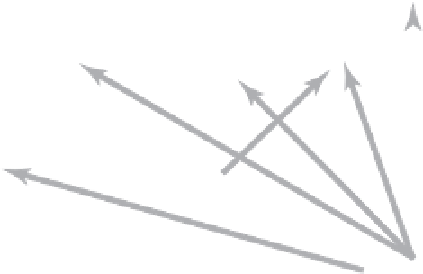Environmental Engineering Reference
In-Depth Information
4.11
Trophic web for islands in the Gulf of California. From
McCann, Hastings, and Huxel (1998).
phytoplankton) less than 0.2% for the entire biosphere.
Energy losses between subsequent trophic levels are never
high; on average they are definitely lower than 10%.
The calculation begins by determining exploitation
efficiencies, shares of the production at one trophic level
that are actually ingested by organisms at the level above
(the rest being accumulated and degraded by decom-
posers). Shares of the NPP actually consumed by herbi-
vores are just 1%-2% in many temperate forests and
fields, and 5%-10% in most forest ecosystems. They
peak at 25%-40% in temperate meadows and wetlands
and, exceptionally, at 50%-60% in rich tropical grass-
lands; in the ocean they can even surpass 95% for some
patches of phytoplankton (Crawley 1983; Chapman and
Reiss 1999). When the calculation includes only the
above-ground heterotrophs, the transfer is rarely above
10% in any temperate ecosystem, and when it is restricted
to vertebrates, it is mostly about 1%.
The next calculation step considers ingested energy
that is actually absorbed in the gut. Herbivores, subsist-
ing on often digestion-resistant plant polymers, absorb
feed with efficiencies that are often less than 30%, and













































































